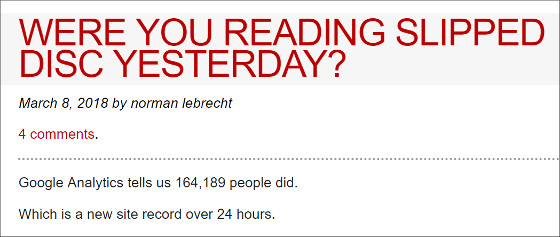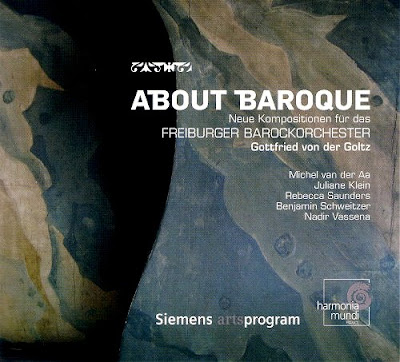Learn as if you were to live forever
Mahatma Gandhi exhorted us to "Live as if you were to die tomorrow. Learn as if you were to live forever" . So, accordingly, I celebrated my recent coming of (old) age by taking the overnight Stena Line ferry seen above across the North Sea from Harwich to the Hook of Holland, from where the excellent Dutch public transport network took me on the path of more living and learning.
My first destination was Norman Perryman's studio in Amsterdam. Norman's experiments in fusing kinetic art with classical music have long appealed to me, and when I wrote about his Aldeburgh Festival appearance with Pierre Laurent-Aimard I asked Has classical music finally found its contact high?
Norman works exclusively in the analogue domain. He paints on multiple overhead projectors, and the audience can watch the creation and dissolution of his fluid images on a giant screen in real time, as his brushwork flows, pulsates convulses in time with the music.
Quite understandably, there is currently a backlash against the distracting accretions that marketeers are imposing on live classical music. But it would be very unfortunate if Norman Perryman's pioneering work is swamped by this backlash. As explained in an earlier post, a paper titled Acoustic Space - Explorations in Communication Edmund Carpenter and Marshall McLuhan described how most of our thinking is done in terms of visual models, even when using an auditory one might prove more efficient. Since that paper was published in 1970, the swing from the auditory to the visual has been accelerated by the universal adoption of graphic interfaces for computers. Yet classical music has done very little to acknowledge this inexeroble swing from aural to visual acuity
The role call of musicians who have embraced Norman's marriage of kinetic art and music include Simon Rattle, whose 1993 City of Birmingham Symphony Orchestra performance of Pictures at an Exhibition was given a kinetic dimension by Norman - a performance described by the Times music critic as "an ingenious audio-visual experiment, with brilliantly conceived imagery".
Currently fashionable accretions such as balloons and tweeting in concerts do not complement live classical music: they fight against it. By contrast Norman Perryman's kinetic art is an extension of the performance: he is part of the performing ensemble with a brush as his instrument. Norman's work in progress includes adding a visual dimension to a transcription of Haydn's The Seven Last Words of Christ on the Cross by the Ebonit Saxophone Quartet, and below is his annotated score for the Haydn.
My path took me next to the small town of Katwijk on the Dutch coast. In 1922 expert veena player, author of the influential Mysticism of Sound and Music and Sufi master Hazrat Inayat Khan underwent a profound spiritual experience when leading a retreat at Katwijk. An adept of the Chishti Sufi order, Hazrat Inayat Khan (1882-1927) founded the ecumenical International Sufi Movement, and in the 1950s the Sufi Movement entered into a long term lease for the land in the sand dunes at Katwijk where the retreat had been held.
At the end of that 1960s - the decade when the West embraced Eastern mysticism - work started on the Sufi Temple 'Universel Murad Hassil' and the Katwijk Temple was completed in 1970.
Building of the Universel Murad Hassil to a design by the celebrated Dutch architect S.J. van Embden was made possible by the patronage of Dr. H.J. Witteveen. Best known as managing director of the International Monetary Fund from 1973-78 and Dutch minister of finance (1963–65; 1967–71), Dr Wittteveen grew up in a Sufi family and is the author of several influential books on Sufism and the International Sufi Movement.
At the heart of Universal Sufism is Hazrat Inayat Khan's belief that "Belief and disbelief have divided mankind into so many sects, blinding its eyes to the vision of the oneness of all life". In accordance with this belief Universal Sufism is not aligned with any of the great religious traditions, but instead celebrates this oneness of all life. During my visit I attended the movement's Universal Worship service which celebrates Hinduism, Buddhism, Zoroastrianism, Judaism, Christianity and Islam with readings from the sacred texts of those traditions, and which also acknowledges the power of the Divine Feminine, Taosim, and indigenous traditions.
In 2014 the Katwijk Sufi temple was awarded the status of a Dutch national monument and is now a venue for diverse cultural activities. On the evening of my arrival there was a recital and talk by Dominic Seldis, principal bass of the Concertgebouw, and on the Sunday afternoon there was a concert by Sufi Sheikh Hassan Dyck and friends - that is me with Sheikh Hassan in the photo below.
Although linked to the Universal Sufi Movement by the thread of Sufism, Sheikh Hassan Dyck belongs to the more orthodox Naqshbandi Sufi movement. Lineages bind Sufism together, and Sheikh Hassan's master was Sheikh Nazim Al-Haqqani, who died earlier this year. The Naqshbandi-Haqqani order has one of the largest memberships in the West of contemporary Sufi orders, is particularly strong in the United States, and is noted for its use of the internet for proselytizing. However, in common with almost all high profile figureheads of religious traditions, Sheikh Nazim Al-Haqqani was touched by controversy: he condemned Islamic terrorists, was a vocal supporter of the Western 'war on terror', and made some much publicised erroneous predictions about how mahdi - the end of the world - would coincide with the year 2000.
Sheikh Hassan Dyck studied classical cello and has developed a unique Sufi music that fuses contemporary and traditional styles. Among the 'friends' supporting him in Katwijk was the young aspiring master of the rebab Hamid Wentzel seen below. The musical forces for the Katwijk concert were conventional, but appearances with more diverse musicians have caused his music to be described tantalisingly as "a blend of minimal jazz, blues and trance", while a CD on sale at the concert features electric bass and pure electronics.
The Naqshbandi-Haqqani Sufi order is unusually accessible, and Sheikh Hassan's concerts include an authentic Sufi dhikr. This is the ecstatic chanting of the ninety-nine names of Allah that is traditionally accessible only to Sufi adepts. The tradition of whirling dervishes has been adopted by the Naqshbandi-Haqqani brotherhood from Rumi's Mevlivi order. In the photo below of the dervish, the 93 year old Dr. H.J. Witteveen - patron of the Universel Murad Hassil - can be seen on the extreme right. I had the privilege of talking with Dr. Witteveen after the concert; tragically his son, the Dutch politician Willem Witteveen, died when Malaysian Airlines Flight 17 was shot down over eastern Ukraine earlier this year.
Writing in his definitive study Universal Sufism Dr. Witteven describes how:
Of all the arts music has a particular spiritual value and meaning because it helps [us] to concentrate or meditate independently of thought: and therefore music forms a bridge between form and the formless. This is why music has always played an important role in Sufism.During the concert Sheikh Hassan repeated Rumi's assertion that "the listener is a player, and the player is a listener", an assertion that has also been repeated On An Overgrown Path. Sheikh Hassan says that his mission when performing is "to reach the divine moment together with the audience", and I can personally testify that during the climactic dhikr in Katwijk his mission was achieved. That goal of leading the audience to the ineffable was once shared with Western classical music. But today the Western tradition has abandoned it in favour of merely entertaining the audience. Classical marketeers would do well to heed Ghandi's exhoration to "Learn as if you were to live forever" and attend one of Sheikh Hassan's dhikrs. With that thought I leave you for a while, as I have a lot more living and learning to do and Egypt beckons.
My trip to Holland was entirely self-funded. But Sheikh Hassan's management generously declined payment for my concert ticket. My thanks also go to Norman Perryman and his delightful wife Coco for their hospitality, and to my family for, once again, tolerating a birthday disappearance. All photos are (c) On An Overgrown Path 2014. Any other copyrighted material is included as "fair use" for the purpose of critical analysis only, and will be removed at the request of copyright owner(s). Also on Facebook and Twitter.

























Comments
For example, he apparently said Bush and Blair were saints, and his followers often take it at face value. Obviously they're not 'Saints of the Infinitely Good', but saints of satan (awliya ash-shaytan), though he'd often leave the listener to interpret his speech in their own way.
For example, he apparently said Bush and Blair were saints, and his followers often take it at face value. Obviously they're not 'Saints of the Infinitely Good', but saints of satan (awliya ash-shaytan), though he'd often leave the listener to interpret his speech in their own way.